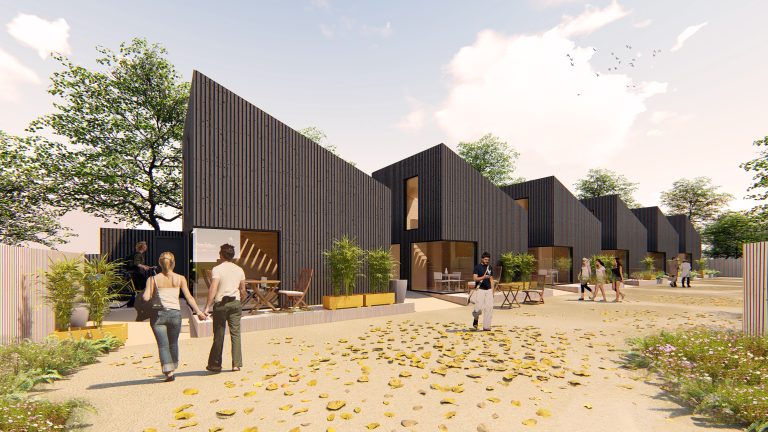Totally Modular is – quite literally – taking its innovative solution for affordable housing to the Bristol Housing Festival, a new kind of event set up to re-imagine better ways to live in cities and to find solutions to the current national housing crisis. Totally Modular is a leading exponent of offsite manufactured housing solutions and will be demonstrating one of its two-bedroom, four-person houses at the Bristol Housing Festival, Waterfront Square BS1, 19th October to 4th November. A highlight of the festival will be on Tuesday 23rd October, when a delegation from the Global Parliament of Mayors, which is also meeting in Bristol, will visit the showcase. Like all of the company’s residential modules, the house on display is built in a factory around a high-integrity steel frame, an approach that brings advantages to owners, occupiers and developers alike. Most notably, a house can be built in less than 600 hours, the controlled internal environment of the factory contributing to efficiency and helping ensure quality at every stage. Once complete, the house is transported to site, lifted onto prepared foundations and connected to utilities. Costs become almost perfectly predictable and new housing schemes can be completed with previously unimaginable rapidity. Available in a number of sizes and formats, the Totally Modular homes are ideal for both single person occupancy and for growing families. They can be used to create detached homes, semi-detached and terraced housing and even stacked to create blocks of flats. The exterior finishes can be matched to their destination’s style, traditional or contemporary, while internally, the fittings can be to any style and quality. They come with fully-fitted kitchens and bathrooms, lighting and heating; built-in furniture is a popular option for the smaller one- and two-person modules. Interestingly, the unit taken to Bristol has already been used as a demonstrator at Totally Modular’s Cradley head office and manufacturing site in the West Midlands. Its stylish two-storey design provides generous living areas and two large double bedrooms, so is suitable for four-person occupancy. The ground floor features a roomy kitchen with breakfast bar, a comfortable living/dining room with french doors out to the rear garden that also impart a light, airy feel. A downstairs W.C. and a storage/utilities space make for well-ordered living. Upstairs, there are two double bedrooms, a family bathroom and additional storage space. High vaulted ceilings and Velux windows on the stairwell and in the bathroom maximise daylight. Brian Maunder of Totally Modular says the module is a perfect complement to the aims of the Bristol Housing Festival. “We face a crisis in the affordability of our housing. We need to rethink the way we create homes and communities with new approaches and new technologies. “Bristol is taking responsibility for its future housing with innovation and creativity. It is a city that is prepared to stand up and lead.” The Festival provides an opportunity to road-test a range of existing concepts and innovative solutions in the real-world helping to speed up the delivery of quality, affordable housing in the city. It will be visited by most, if not all, of the UK’s city mayors, along with overseas counterparts and others involved in creating and implementing strategies for developing cities, who will be in Bristol for the annual conference of the Global Parliament of Mayors. Their meeting aims to solve key global challenges under the theme Empowering Cities as Drivers of Change and will discuss innovative approaches to the many challenges of housing provision. Photo Caption: Totally Modular will be demonstrating one of its two-bedroom, four-person houses at the Bristol Housing Festival from the 19th October to the 4th November 2018. About Totally Modular Totally Modular is a leading manufacturer of steel frame, modular homes for social and affordable housing. As a turnkey provider, Totally Modular designs, manufactures and installs homes that are 97% complete when they arrive on site; including pre-installed kitchens, bathrooms and finishes. Ground works, services and landscaping can also be incorporated as part of any housing solution. With the inherent scope and manufacturing capacity to provide multiple housing structures to fully accredited standards with maximum convenience, Totally Modular offers a comprehensive solution to tackle the housing challenges of the future. The image(s) distributed with this press release may only be used to accompany this copy, and are subject to copyright. Please contact DMA Europa if you wish to license the image for further use.









